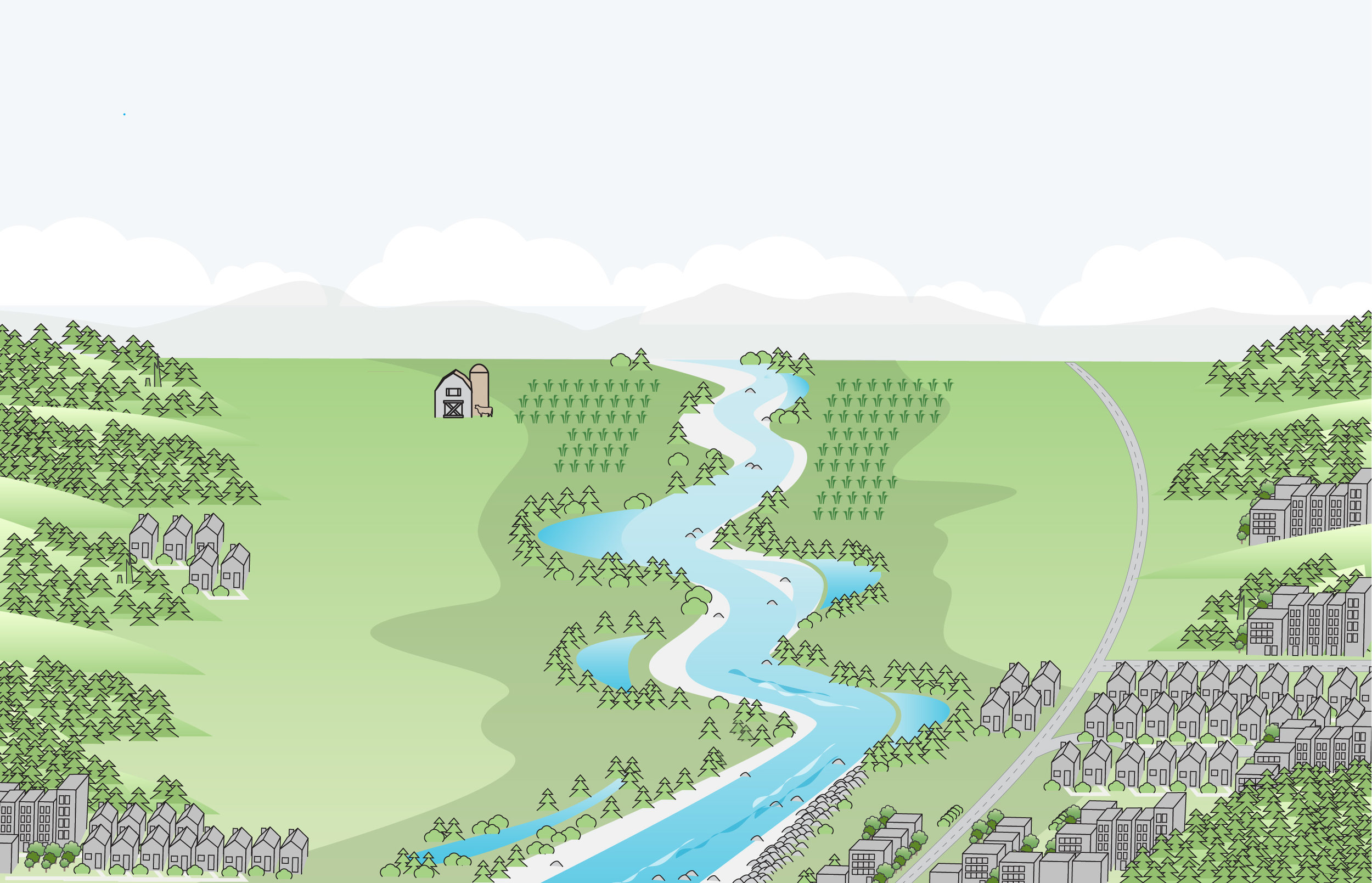By Emily Howe, aquatic ecologist
Not only does green infrastructure protect, restore and rehabilitate natural habitats for fish and wildlife, but it also provides a suite of co-benefits to people. Access to nature can improve human health by reducing stress and anxiety levels, filtering and cleaning air pollutants, reducing urban air temperatures and providing recreational opportunities.
The Two-Minute Takeaway
A quick explanation of scientific terms and concepts we use regularly in conservation
Green infrastructure can also be cost-effective. By investing in wetlands, forests and creative stormwater-runoff control, municipalities can avoid major costs associated with gray infrastructure. New York City, for example, purchased land around its reservoirs to protect against polluted runoff. By investing $600 million in Catskills land protection and restoration, the city was able to avoid $6 billion in capital costs to construct a water-treatment plant, as well as $200 million to $300 million per year in operation and maintenance. In California’s Napa Valley, wetland protection and levee setbacks protected 2,700 homes and prevented $26 million in flood damage each year, while also creating open space for parks and aquatic habitat.
Green Infrastructure also promotes climate resiliency. In many regions, climate shifts have brought increased storm intensity and rainfall. New climate and precipitation patterns are overwhelming aging pipe systems, which are not designed to handle more dynamic and pulsed flow events. The costs of upgrading pipe systems to handle more volume are enormously expensive and provide none of the side benefits that green infrastructure provides to humans and nature. Choosing to restore natural floodplains, wetlands and forests will enhance a dynamic and responsive stormwater-management system that provides flood protection, clean water, habitat and access to nature.



























